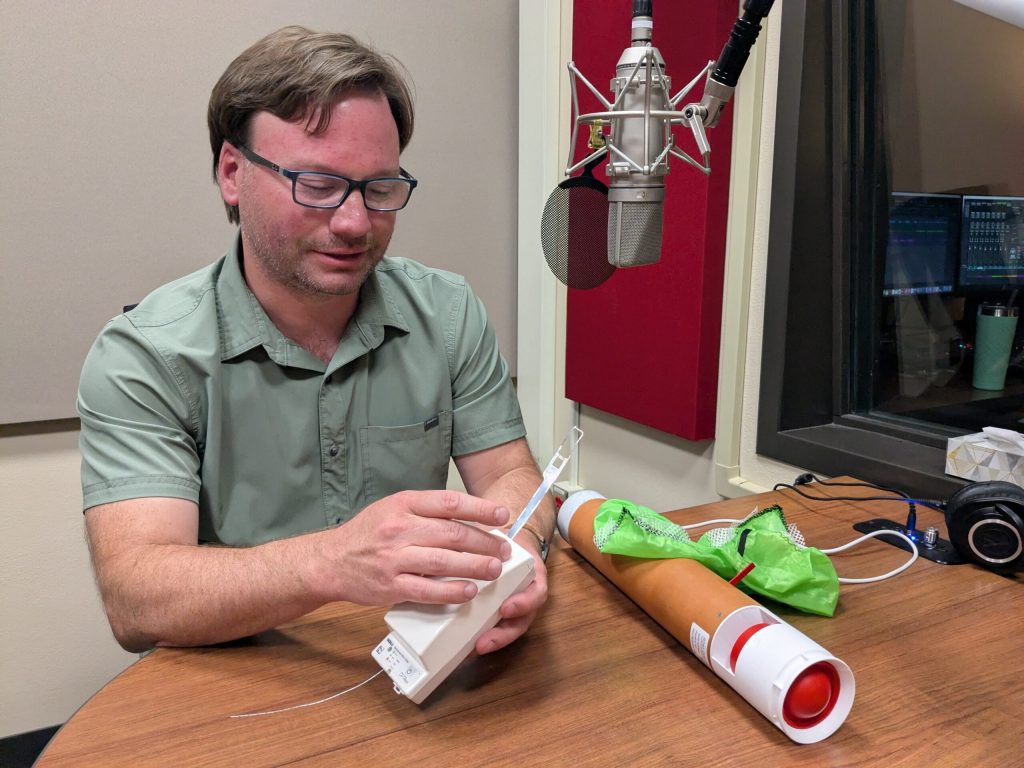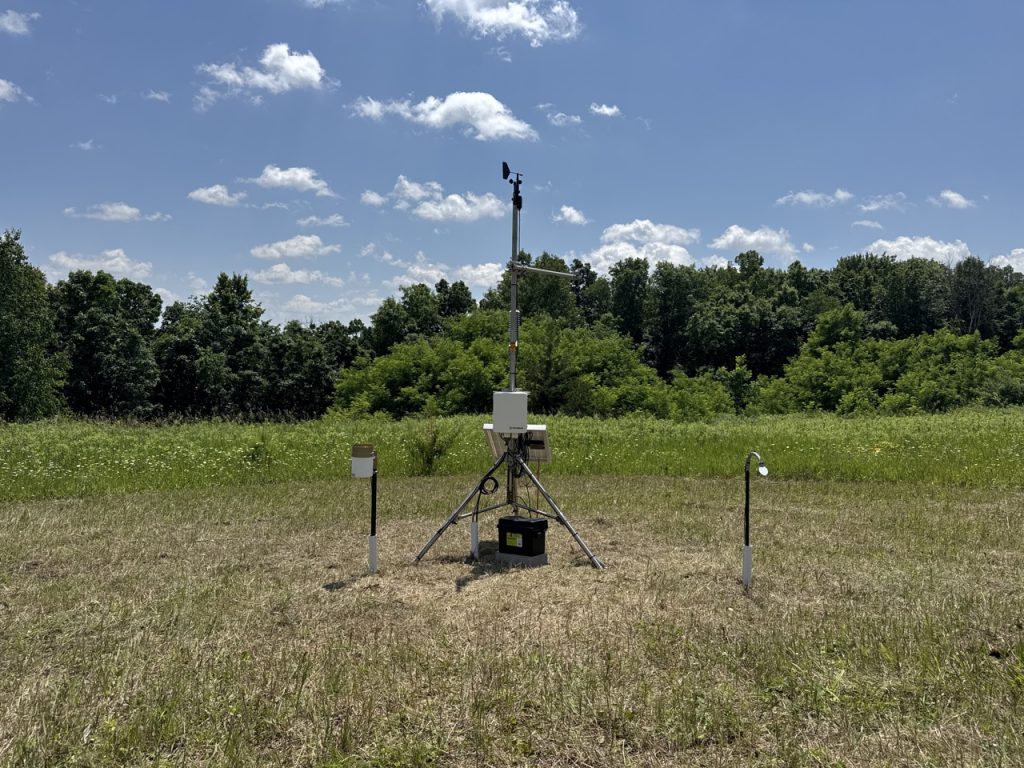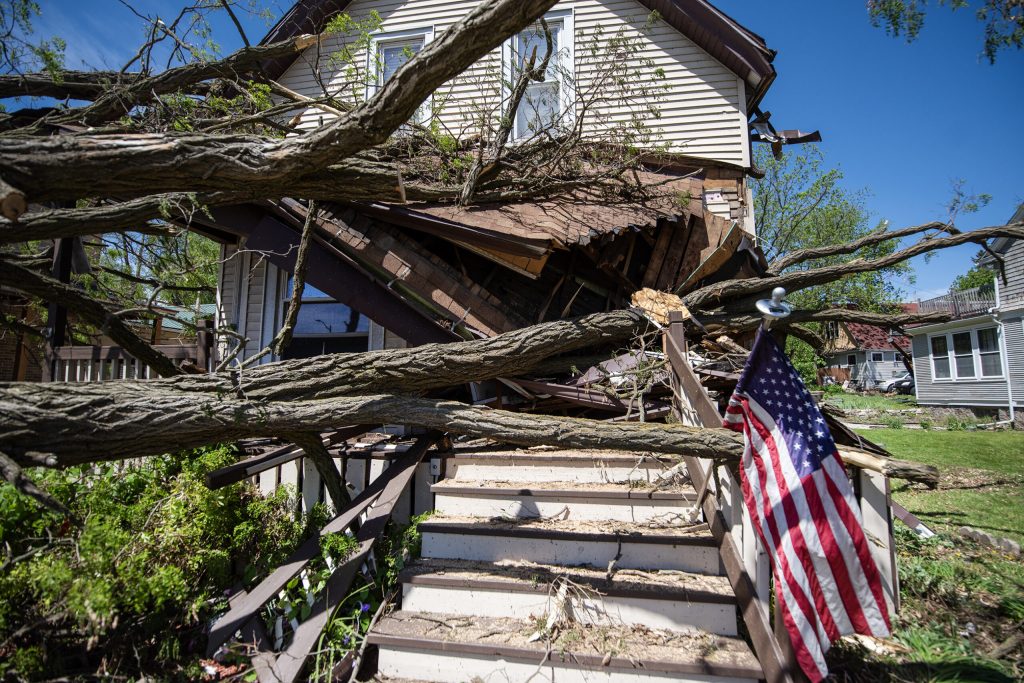Meteorologists Say Cuts To National Weather Service Already Degrading Quality of Forecasts
Fewer weather balloon launches means less accurate forecast data, which could be hazardous during storm season.
Meteorologists in Wisconsin and throughout the country are warning that funding cuts to the National Weather Service are affecting local weather forecasts, which can have serious repercussions during storms, tornadoes and other severe weather.
Along with other agencies, the National Weather Service is dealing with a personnel storm as hundreds of jobs have been eliminated at field offices in recent months by the White House’s cost-cutting efforts.
Bob Lindmeier recently retired as senior chief meteorologist at WKOW-TV in Madison and is a member of the Committee on the Station Scientist, a professional organization for broadcast meteorologists. He told WPR’s “Wisconsin Today” that data provided by the National Weather Service is crucial to reporting daily forecasts.
“As broadcast meteorologists, we do not issue tornado warnings and severe weather or severe thunderstorm warnings ourselves. We pass on what the National Weather Service gives us,” Lindmeier said. “Broadcast meteorologists cannot do their job without them.”
Accurate weather forecasts are important not only when it comes to issuing severe weather warnings to the public but also aviation safety, farming and managing the energy grid. Most of the forecasting that meteorologists do is based on data provided by the National Weather Service via weather balloons, satellites, Doppler radars and supercomputers that process vast amounts of data and run weather prediction models.
“It’s a finely tuned machine that the National Weather Service and [the National Oceanic and Atmospheric Administration] has had ongoing for many, many years,” Lindmeier said. “When you disrupt that finely tuned machine, it’s hard to get it back going.”
Canceled weather balloon launches degrade forecast quality
One major aspect of the National Weather Service’s work that has been facing disruption is the launch of weather balloons, which gauge weather conditions high up in the stratosphere. When all is going to plan, trained staff send the balloons up twice a day, once in the morning and once in the evening, from 100 sites around the country.
“Meteorologists have been launching weather balloons for almost 100 years now. We continue to do it because that is the only way that we get direct measurements of everything that’s going on above us in the atmosphere,” said Chris Vagasky, who manages the Wisconsin Environmental Mesonet, or Wisconet, a network of weather and soil monitoring stations across the state.
Each balloon carries a small device called a radiosonde, which Vagasky described as a mini weather station. The radiosonde collects data on its journey 100,000 feet into the atmosphere before the balloon expands and bursts, sending the radiosonde back down to Earth on a small parachute.
“We get measurements of temperature, humidity, wind speed, wind direction, air pressure every 15 feet through the atmosphere, and that is a huge component of the weather modeling that helps us to make predictions for the short term and for the long term,” Vagasky said.
But recently, some launch sites, including the one in Green Bay, had to cut back to one or zero launches a day, resulting in degraded forecasts during severe spring storms.
Because each launch requires two trained weather service staff members, Vagasky said that continued staffing shortages and further cuts could “put the Wisconsin balloon launch site at risk again.” This, in turn, would reduce the amount of local data feeding into weather prediction models and make forecasts less timely and reliable over time.

Chris Vagasky holds a radiosonde and explains what it does in the WPR studio on June 23, 2025. Richelle Wilson/WPR
More weather, more problems
While weather balloons help meteorologists see data from high up in the stratosphere, weather stations collect information about temperature and wind speed at the surface. For many communities, the nearest weather station is at the local airport. But that leaves a lot of Wisconsin off the radar, so to speak.
“We’re trying to get everybody in Wisconsin within about 20 miles of one of our weather stations or an existing airport weather station, which will give meteorologists — whether it’s broadcasters like Bob, whether it’s the National Weather Service, whether it’s our state climatology office or agronomists that are working on crop forecasts — the nearby really high-quality weather data every five minutes, so we can give very real-time information as storms are moving across the state,” Vagasky said. “This has real impacts and real benefits for protecting lives, protecting property and enhancing the economy of Wisconsin.”
For now, Wisconet is funded through 2027 with support from the Wisconsin Rural Partnerships Institute, which is a program with the U.S. Department of Agriculture, and the Wisconsin Alumni Research Foundation. But after that, Vagasky said additional funding will be needed for Wisconet to continue the work of maintaining weather stations and installing new ones throughout the state.

Wisconet installs and maintains weather stations throughout the state, including this one in Mindoro, which was set up on July 1, 2025. Photo courtesy of Chris Vagasky
Vagasky emphasized that the forecasts people access on their weather apps are based on data collected by the National Weather Service and weather stations like the ones installed by Wisconet.
“All of the information that you’re getting on your phone that you’re not thinking of, ‘Where is it coming from?’ — it’s federally funded for the most part,” he said.
“[Billions of] people on the planet are impacted by the weather every day,” Vagasky said. “It doesn’t matter which side of the political spectrum you’re on — you’re affected by the weather.”
Lindmeier said the National Weather Service has weathered the storm so far, but he believes that any additional cuts to the agency will be felt by the general public.
“They’ll notice forecast deterioration. They’ll notice the warnings are not as effective. They’re not as timely,” he said. “That will manifest itself with further cuts.”
National Weather Service cuts degrade accuracy of Wisconsin forecasts, meteorologists say was originally published by Wisconsin Public Radio.
If you think stories like this are important, become a member of Urban Milwaukee and help support real, independent journalism. Plus you get some cool added benefits.























Let’s see, should we fund good weather science or build hastily constructed concentration camps in a flood and hurricane prone area? Tough one merica.
The U.S. Constitution didn’t say observe, ponder, or permit.
Instead, it said PROMOTE the General Welfare.
When these funds are tampered with promotion is thwarted,
and the Constitution is violated.
Let’s veto this crap. Stand up to the IRS with do-it-yourself
tax adjustments. A few million dollars would provoke corrective legislation.
Get to a billion or so, and you’ll see a special legislative session!
If enough people hammer hard enough, it’ll become Case Law.
To fight assholes,
sometimes you gotta act like them,